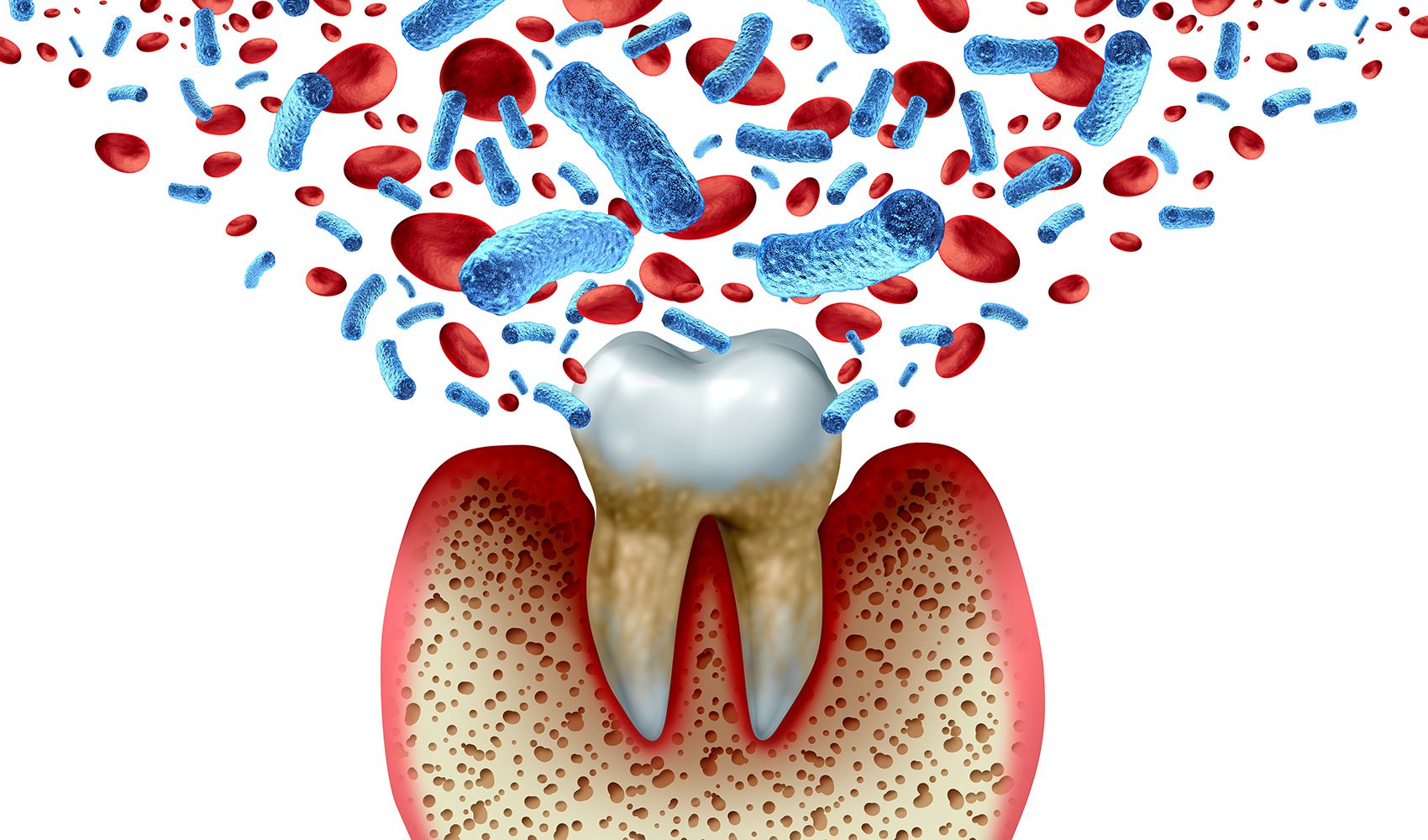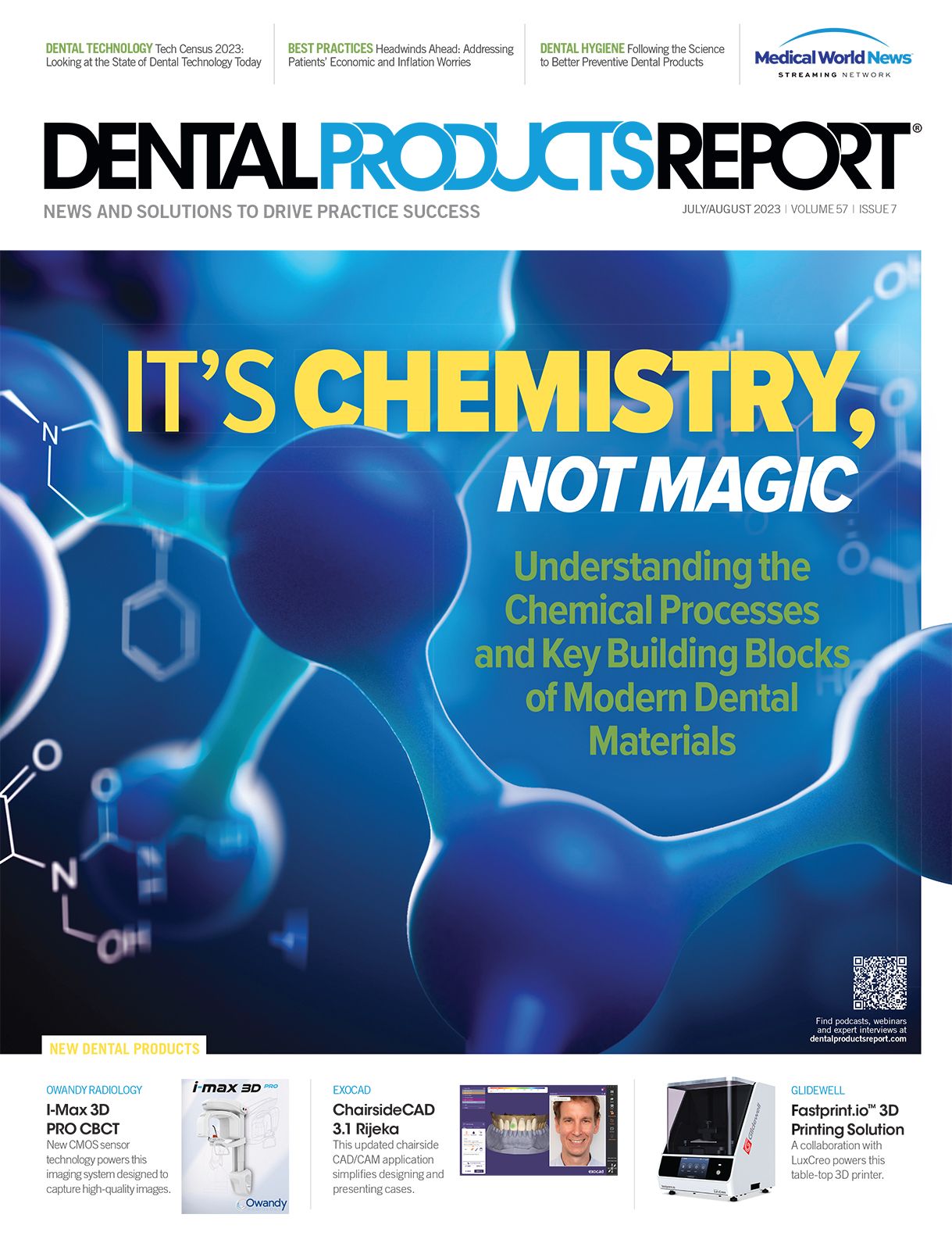Following the Science to Better Preventive Dental Products
Mark Cannon, DDS, MS, outlines data indicating the dental industry should move away from using chlorhexidine and toward a xylitol-erythritol combination.
Image Source: © freshidea / stock.adobe.com

Although it likely comes as no surprise to anyone working in a dental practice, the prevalence of oral diseases can be staggering to think about. When this is coupled with the growing body of knowledge linking these oral conditions to other systemic health problems, it is clear that dental professionals need to find the most effective preventive and restorative options and guide patients toward oral care products that also help protect their overall health.
For dental educator, clinician, researcher, and current president of the American Academy for Oral and Systemic Health, Mark Cannon, DDS, MS, this means keeping up on the latest research and being willing to adapt when it becomes apparent a better solution is available for his patients. He hopes other dental professionals will take a similar approach as new research findings point to enhanced oral and systemic efficacy of different treatment and home care options.
“According to the Centers for Disease Control [and Prevention (CDC)], we have oral disease that ranges from cavities to gum disease to oral cancer. It causes pain and disability for millions of Americans, and it costs the taxpayers billions…of dollars for just the oral care, let alone what we now know are the [adverse] effects, where we have a very significant systemic illness that occurs,” Dr Cannon says in a recent interview with Dental Products Report.
The Challenge of Oral Disease
Dr Cannon notes that although the CDC reports that 47% of adults have some form of periodontal disease by age 30, and 70% have periodontal issues by age 65, many dental professionals think that second number might actually be a low estimate. The impact of this disease is felt in many ways, with Dr Cannon noting that tooth loss leads to a 59% increase in overall mortality, whereas the presence of periodontal disease means a patient is 49% more likely to face cardiovascular issues.
“All these have immense costs down the road, and I think everyone’s starting to realize this,” Dr Cannon notes. “Why is this occurring? Why is it such a scourge of mankind?
Well a lot of it, sadly, is diet. Our diet is heavy in carbohydrates. Foods are not nutritious, and heavily preserved, which affects our health and is the cause of many issues.”
Systemic Approaches
Although the challenge is significant, the growing knowledge of the connection between periodontal disease and other systemic health conditions is leading to new approaches to patient care. With research data showing that airway issues can hamper the effectiveness of periodontal treatment, Dr Cannon notes that clinicians should now make sure they are checking periodontal patients for complications that might arise from mouth breathing.
This approach is also leading to new approaches for dental professionals. Dr Cannon says dentists should be asking periodontal patients about their diet and potential diabetic conditions. The standard of care for a dental visit was once just to clean the teeth, but Dr Cannon says it is time for dental professionals to be more comprehensive in how they approach patient diagnostics and care.
“The periodontal probe was first designed by Dr Charles Williams back in 1936,” he notes. “We’re looking at 90 years, and we have got to improve the standard of care.”
Challenging the Status Quo
Looking at ways to improve on the standard of care is something Dr Cannon says is critical to the future of dentistry, as well as health care in general. One part of that mission is to continue to search out more effective and safer options in all areas of oral care, and he believes mouthwashes and home care products are due for an update when it comes to the active ingredients being used.
Dr Cannon notes that according to marketers and manufacturers, approximately 200 million Americans use some type of mouthwash. Many of these products feature similar formulations of their inactive ingredients, but there are major differences when it comes to the actual antiseptic agent at work.
Chlorhexidine is among the common active mouthwash ingredients, and it is especially used for periodontal patients, but Dr Cannon says evidence from a growing body of research should be leading dentists away from those solutions. Although chlorhexidine does kill microbes, the adverse effects can be counterproductive.1
“Chlorhexidine can cause an increase in calculus formation. It can alter taste perception. But that’s not the big problem with chlorhexidine,” Dr Cannon says. “The big problem with chlorhexidine is the systemic effect.”
Troubling data show that chlorhexidine might cause problems for patients with cardiovascular issues. This is because it is very effective at killing Neisseria bacteria, which Dr Cannon explains are bacteria that break down nitrates to become nitric oxide, which helps regulate blood pressure and cardiovascular health. He also notes that preserving Neisseria is among the guidelines issued by the American Heart Association.
“Sadly, in studies done with just 2.2% chlorhexidine, they find it reduces your nitrate-producing bacteria by over 90%, which has a really bad effect upon both systolic and the diastolic blood pressure,” Dr Cannon says.
He finds this data most troubling because it shows that patients with cardiovascular issues and periodontal disease could be using chlorhexidine to treat their oral condition without knowing that it could be exacerbating their cardiovascular problems.1
Looking to the Source for New Solutions
Although these findings are troubling, Dr Cannon believes there are options proving to be just as effective for treating periodontal disease without the drawbacks of chlorhexidine. To find those options, he and other researchers are looking to the human body’s natural function to find solutions that provide a more systemic approach.2
“We’re finding that you need to maintain your natural defense mechanisms, especially saliva, and saliva has incredible properties,” he says. “It lubricates while you eat food, it starts enzymatic digestion, it buffers, it has calcium and phosphate to remineralize teeth, it helps with tissue repair, and of course, the lubrication helps with the eating and talking, and all that enhances taste.”
Issues with saliva production can lead to problems with taste and can affect a patient’s speech. But more importantly, issues with saliva production correlate with an increase in periodontal disease, and Dr Cannon notes that with more than 1100 prescription medications causing dry mouth as an adverse effect, it should not be a surprise that dry mouth issues affect 20% of the adult population.
“So we do need to have a mouth rinse that is effective, that helps with a little lubrication, helps reduce decay, and does not cause more decay,” he says.
“Saliva has all these enzymatic complexes, which are just fascinating. In fact, there [have] been studies showing over 63 antimicrobial proteins and peptides in our saliva, and they’re part of our innate defense mechanism.”
A New Active Ingredient Combination
With those goals in mind, Dr Cannon is excited about the results he sees from mouthwashes and toothpastes featuring combinations of polyols such as xylitol and erythritol.3-7 Both are prebiotics which Dr Cannon explains means they encourage the growth of “good” bacteria and discourage growth of pathogenic bacteria. Additionally, he notes that research findings show xylitol can serve as a calcium carrier and enhance remineralization of tooth structure.
Research into these new mouthwash formulations is showing that xylitol can be as effective as chlorhexidine, and it does so without the adverse effects.8,9
When it comes to promoting a health oral environment, Dr Cannon says xylitol has been shown to inhibit the growth of periodontal disease–associated bacteria groups including Porphyromonas gingivalis. It also helps enhance the effectiveness of the natural salivary defense systems, he notes. This has led to some research data showing xylitol as an effective approach to reducing cancer growth.10
“The growth of the cancer is reduced by xylitol, because xylitol enhances the innate defense mechanism by reducing the cancer cells’ resistance to hydrogen peroxide, which is produced by our killer defense cells,” Dr Cannon says. “It is fascinating, the research on xylitol and cancer.”
He notes that some evidence shows that Streptococcus mutans, the bacteria responsible for cavities, can also be an initiator of oral and gastric cancer, and he is excited by the concept of protecting oral health and possibly preventing cancer at the same time with the same materials.
Preventive Dentistry With a Systemic Impact
Research into this area is ongoing, but according to Dr Cannon there are already options available that take advantage of the benefits of xylitol. One formulation that Dr Cannon has helped evaluate at Ann & Robert H. Lurie Children’s Hospital of Chicago features xylitol and erythritol, which strongly inhibited all the oral pathogens tested. In addition, the research team includes renowned scientists from Brazil who added a patented trimetaphosphate nanoparticle for greatly enhanced remineralization. The formula is now called EnamelMax, and it is available in several products from the Xlear Spry Dental Defense product line.
“It also has L-arginine; L-arginine actually increases the pH of the plaque. So it’s the toothpaste that looks at everything,” he says.
Formulations like EnamelMax are important in making dental products more effective for patients. Although most fluoride toothpastes help patients, they reduce decay by only 20% to 25%. Dr Cannon notes that research data today show that is no longer good enough.
Today we know enough to focus on formulations that augment natural defense systems and help maintain a stable, healthy oral environment.
“No one should be utilizing a toothpaste that only prevents decay,” Dr Cannon says. “Your toothpaste should also be working at preventing the periodontal pathogens—like Porphyromonas gingivalis—from attaching to and then invading the gingival epithelial cells. Once they get within the cells, they’re very difficult to remove. Xylitol does that. It prevents attachment of the pathogens to your epithelial cells, which protects the host from attachment and invasion.”
References
Bescos R, Ashworth A, Cutler C, et al. Effects of chlorhexidine mouthwash on the oral microbiome. Sci Rep. 2020;10(1):5254. doi:10.1038/s41598-020-61912-4
Dodds M, Roland S, Edgar M, Thornhill M. Saliva: a review of its role in maintaining oral health and preventing dental disease. BDJ Team. 2015;2:15123. doi:10.1038/bdjteam.2015.123
de Toledo PTA, Delbem ACB, Cannon ML, Sakamoto AE, Pedrini D. The effect of toothpaste with reduced concentration of fluoride-containing sodium trimetaphosphate and polyols on initial enamel erosion. Clin Oral Investig. 2022. 26(12):7243-7252. doi:10.1007/s00784-022-04684-7
Marcato RA, Garbelini CCD, Danelon M, et al. In situ evaluation of 200 ppm fluoride toothpaste content trimetaphosphate, xylitol and erythritol on enamel demineralization and dental biofilm. J Dent. 2021;111:103724. doi:10.1016/j.jdent.2021.103724
Miake Y, Saeki Y, Takahashi M, Yanagisawa T. Remineralization effects of xylitol on demineralized enamel. J Electron Microsc (Tokyo). 2003;52(5):471-476. doi:10.1093/jmicro/52.5.471
Cardoso CAB, de Castilho ARF, Salomão PMA, Costa EN, Magalhães AC, Buzalaf MAR. Effect of xylitol varnishes on remineralization of artificial enamel caries lesions in vitro. J Dent. 2014;42(11):1495-1501. doi:10.1016/j.jdent.2014.08.009
Park E, Na HS, Kim SM, Wallet S, Cha S, Chung J. Xylitol, an anticaries agent, exhibits potent inhibition of inflammatory responses in human THP-1-derived macrophages infected with Porphyromonas gingivalis. J Periodontol. 2014;85(6):e212-e223. doi:10.1902/jop.2014.130455
Krupa NC, Thippeswamy HM, Chandrashekar BR. Antimicrobial efficacy of xylitol, probiotic and chlorhexidine mouth rinses among children and elderly population at high risk for dental caries – a randomized controlled trial. J Prev Med Hyg. 2022;63(2):E282-E287. doi:10.15167/2421-4248/jpmh2022.63.2.1772
O’Connor M, Harrison G, Lenahan D, Moran GP. A dentifrice containing salivary enzymes and xylitol exhibits superior antimicrobial activity in vitro against adherent Streptococcus mutans compared to a chlorhexidine dentifrice. Lett Appl Microbiol. 2023;76(2):ovad026. doi:10.1093/lambio/ovad026
Zi M, Zhang Y, Hu C, et al. A literature review on the potential clinical implications of streptococci in gastric cancer. Front Microbiol. 2022;13:1010465. doi:10.3389/fmicb.2022.1010465
